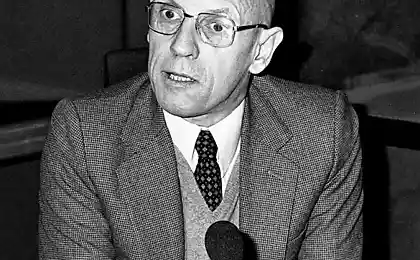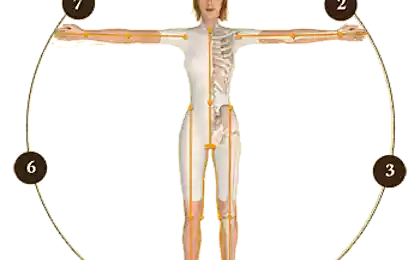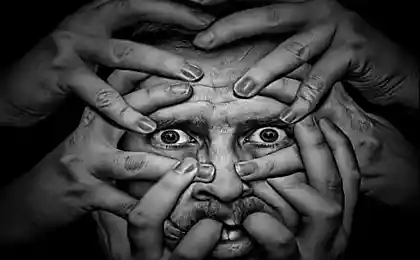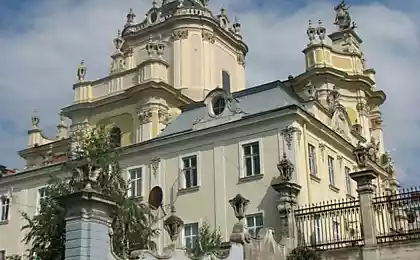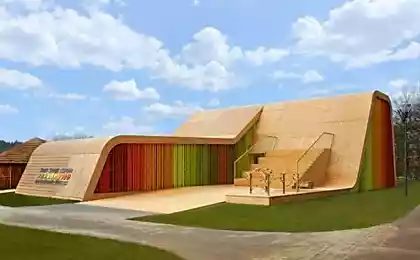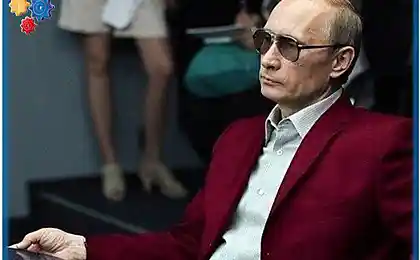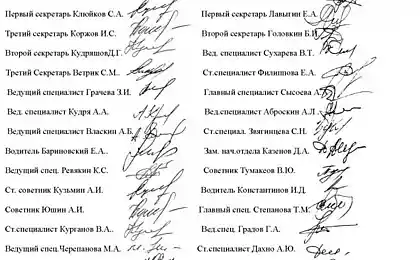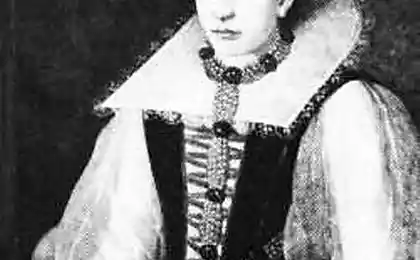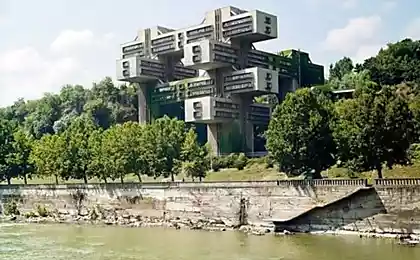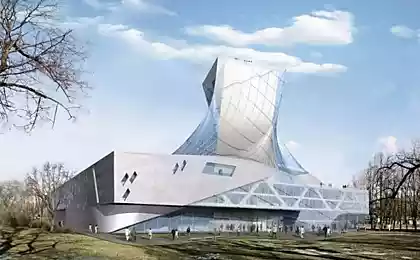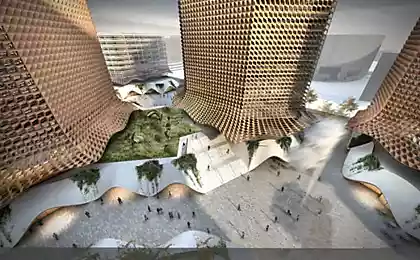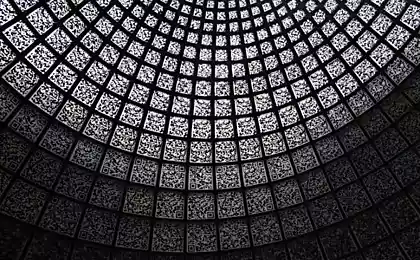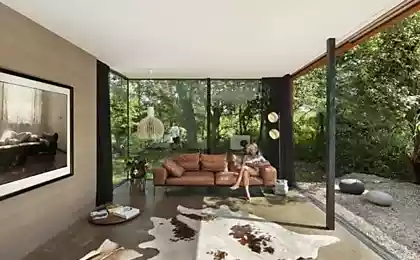1193
Architectural orgy
"Beaubourg" Nicholas Polissky (2013)
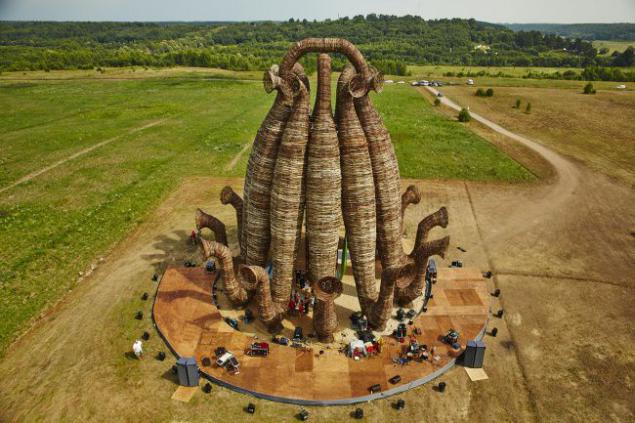
Perhaps, the main representative of the "Archstoyanie" is one of the founders of the festival Nicholas Polissky. In the project "Beaubourg" in Polissky and his team it took one and a half years. Beaubourg - is the name of the old quarter in Paris, which houses the Contemporary Art Centre Pompidou. The main architectural feature of the center - the location of all the technical structures (pipelines, elevators, escalators) outside the building. That visit inspired him to create his Polissky "Babur".
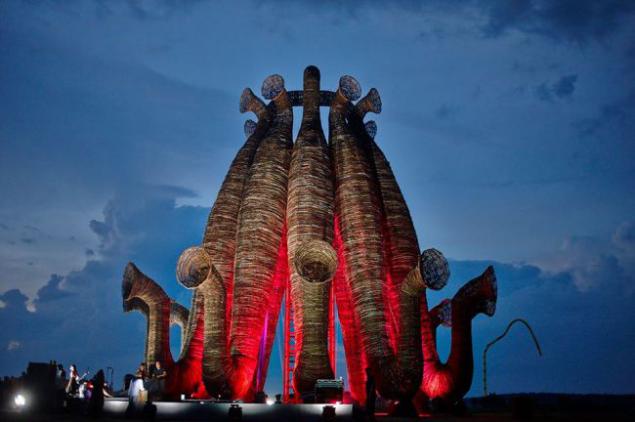
The building height of 22 meters of woven birch trunks on the same technology on which weave baskets.
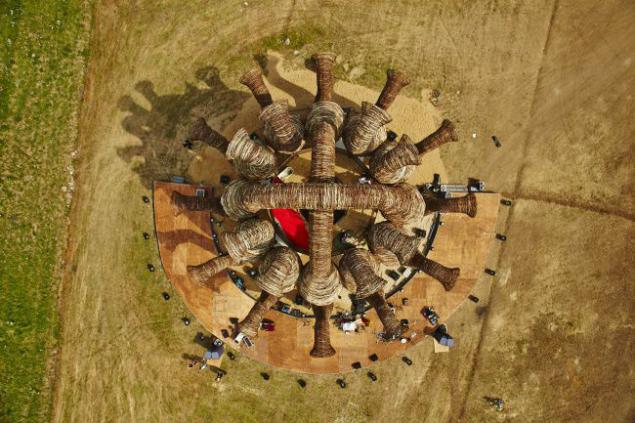
"Universal Mind," Nicholas Polissky (2013)
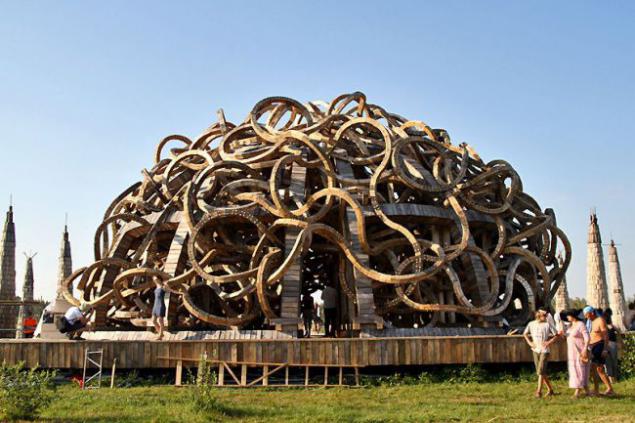
"Universal Mind" - the biggest project Polissky. The sculpture represents the image of the two hemispheres of the brain from mechanical interlocking wooden beams length of about 50 kilometers, surrounded by 42 "missiles". The main idea of the project - the interaction of intellect and nature.
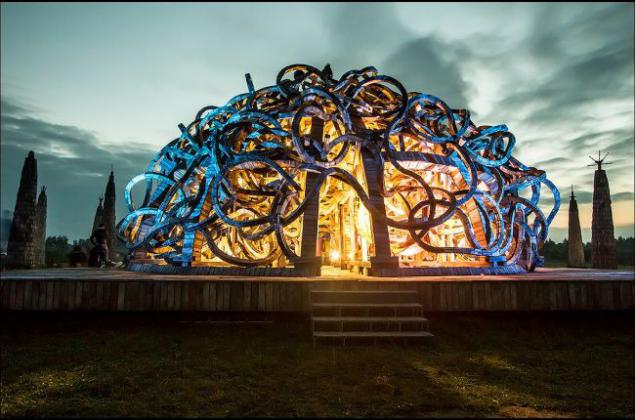
"Storming Heaven", AB Manipulazione Internazionale (2012)
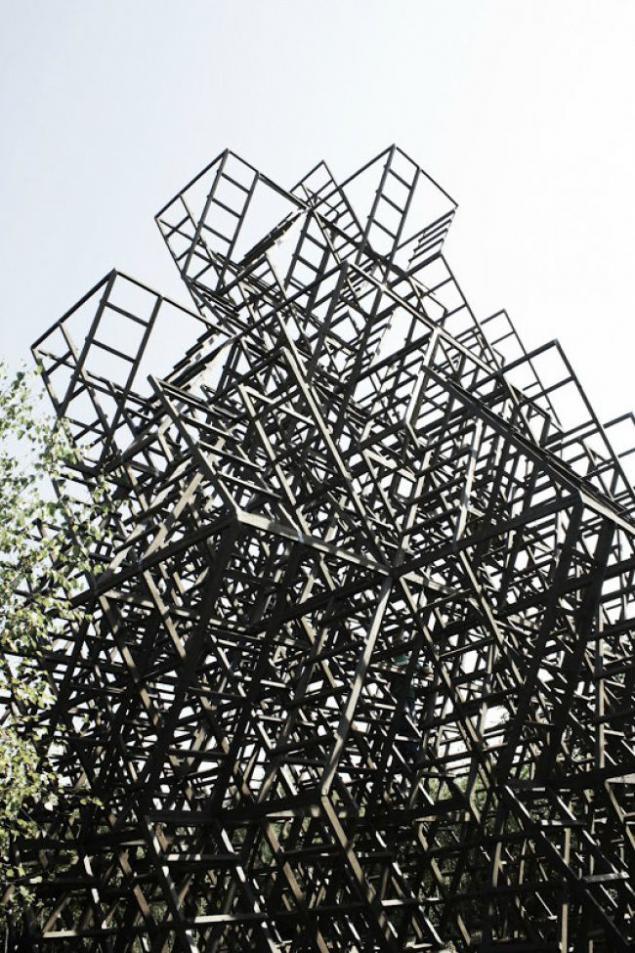
Ladder - the symbol of the movement, the sky - an unattainable object. The project symbolizes how much effort a person is willing to make to achieve their cherished goal. "Storming Heaven" is made up of 72 units, each of which includes 4 ladder.
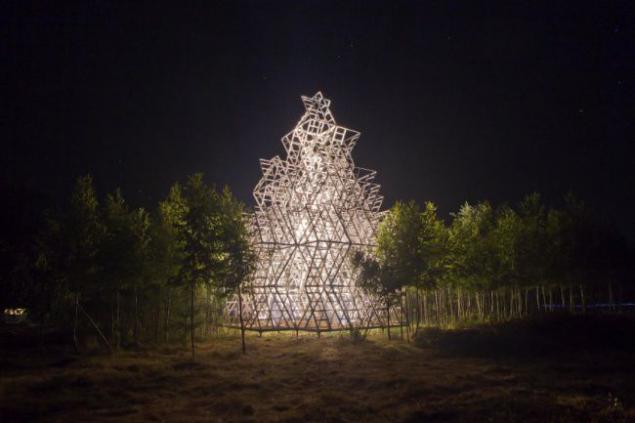
"Beacon on the Ugra" Nicholas Polissky (2004)
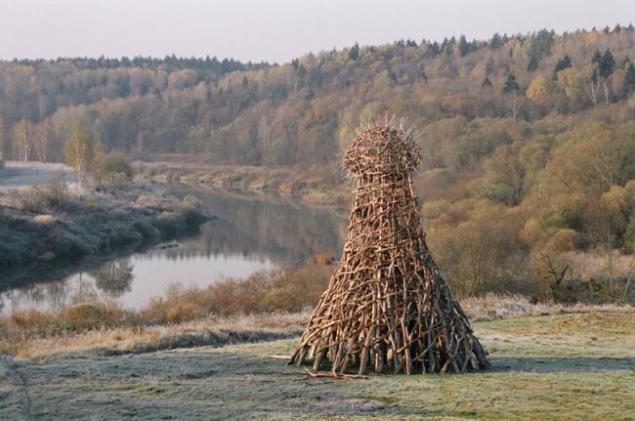
While working on this project, Polissky and his team did not wonder about its purpose. Nevertheless, the "Beacon on the Ugra", being one of the oldest art objects became a symbol of Nicola Lenivets. Vosemnadtsatimetrovaya Tower woven from thin trunks of dead elms poedennyh beetle-bark: on closer inspection, you can find them thin ornament.
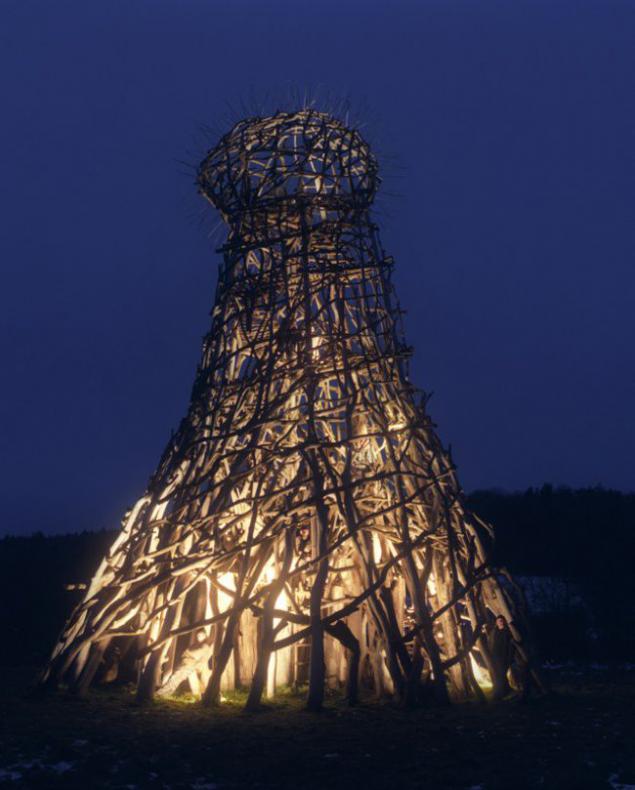
"Nicolino's ear," Vlad Savinkin and Vladimir Kuzmin (2006)
The object is named after the mythical Nikola-Lenivets. "Nicolino's ear" is a likeness of the human ear, deployed to the Ugra river. According to the creators, the construction created to "listen to the silence."
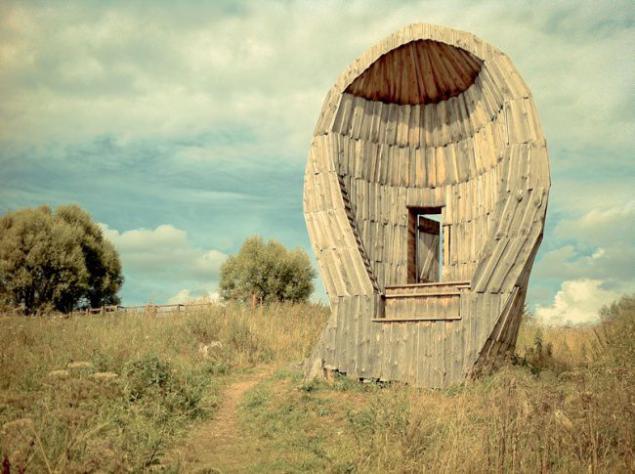
"Shed" AB "Project Meganom" (2006)
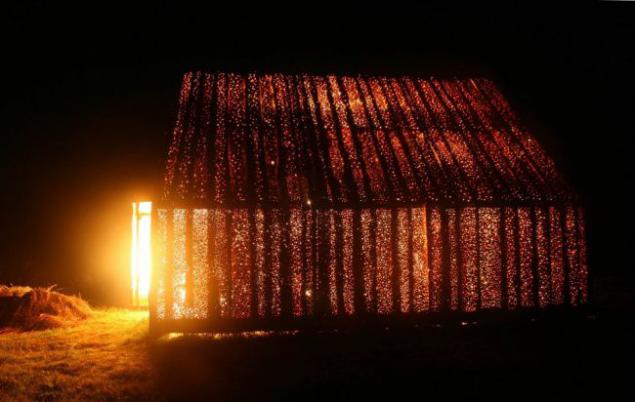
Shed - a simple, elementary object architecture. But in the usual rustic barn author of the project I saw a planetarium. On the surface this is an ordinary house, hewn from rough planks. However, coming closer, you can see that all the walls are riddled with small holes. All holes are drilled by hand in strict accordance with the design of the architect, who looked something like this: "meter fifty-three side facade horse four zero one base four ninety-five the length of five and sixty-five board twenty mm vertically drilled at different angles per square meter, six hundred holes ten mm, seven hundred holes seven hundred and sixty-mm door with a spring and drill open due north oriantirovat detached tree in the evening include hundred-watt bulb »
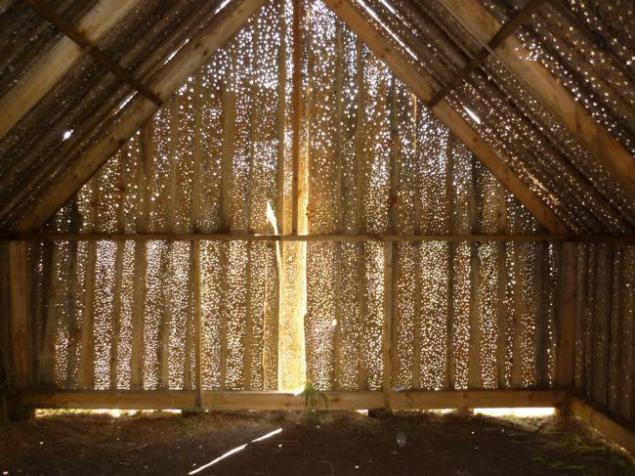
"Rotonda", Alexander Brodsky (2009)
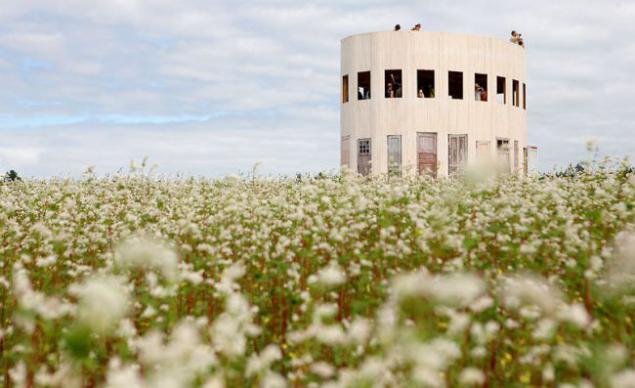
"Rotunda" - one of the most famous objects in the Nicholas Lenivets. It is a small oval-shaped house, situated on a hill. With its creation, it used old doors from demolished houses. The Center "Rotunda" is the hearth. With the object easily visible whole view of the surroundings.
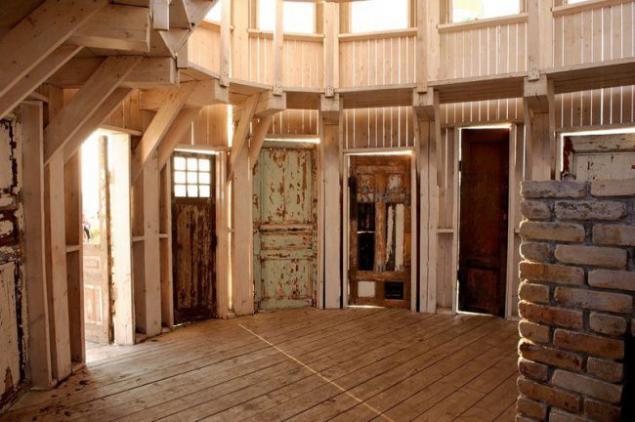
"Hyperboloid cooling tower" ("Vulcan"), Nikolai Polissky (2009)
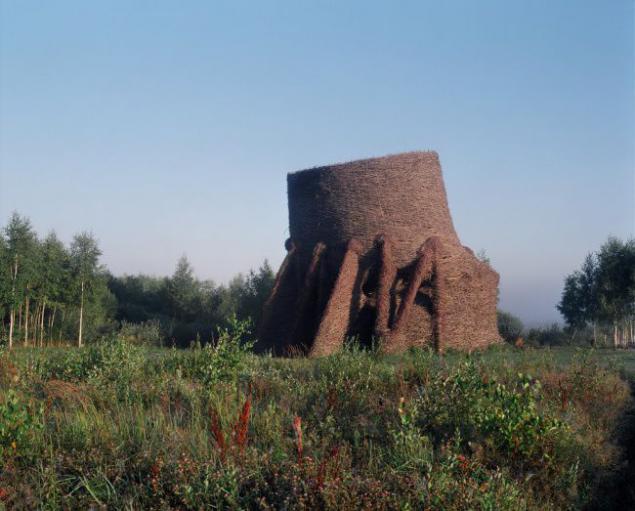
Creating huge wickerwork and branches of the tower, which was pulled out of the column of light and smoke, the author invites the viewer to reflect on the boundary between wilderness and human desire to subjugate her. "Hyperboloid cooling tower" was burned Polissky in 2012 as a result of "Shrovetide performance art."
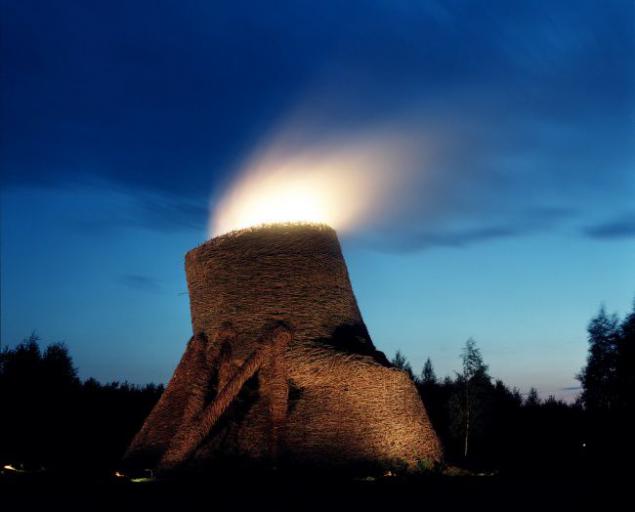
"The Golden Calf", Vasily Schetinin (2009)
Wooden cells - a viewing platform with a pavilion and stage, which offers wonderful views of the objects Nicholas Lenivets. "The Golden Calf" Basil Shchetinina - a symbol of patience, protection and proximity to the roots.
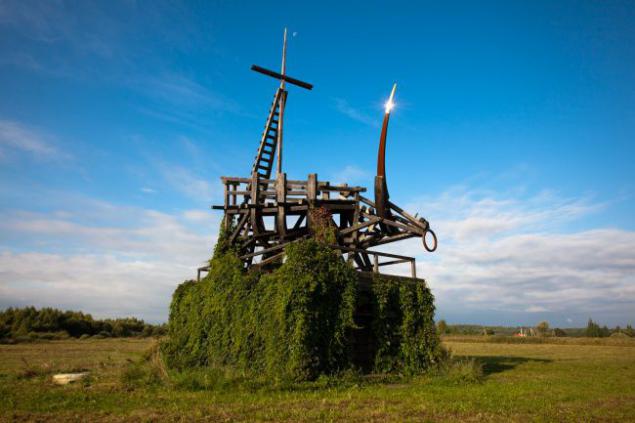
"The Firebird", Nikolai Polissky (2008)
The creation of this installation Nicholas Polissky raised the issue of national imperial mythology. "Firebird" was the highlight of the "Archstoyanie 2008". Over a thousand people an hour were standing with their mouths open at ten-iron bird, spewing flames. From high-temperature cast-iron frame turns red.

Source: nikola-lenivets.com

Perhaps, the main representative of the "Archstoyanie" is one of the founders of the festival Nicholas Polissky. In the project "Beaubourg" in Polissky and his team it took one and a half years. Beaubourg - is the name of the old quarter in Paris, which houses the Contemporary Art Centre Pompidou. The main architectural feature of the center - the location of all the technical structures (pipelines, elevators, escalators) outside the building. That visit inspired him to create his Polissky "Babur".

The building height of 22 meters of woven birch trunks on the same technology on which weave baskets.

"Universal Mind," Nicholas Polissky (2013)

"Universal Mind" - the biggest project Polissky. The sculpture represents the image of the two hemispheres of the brain from mechanical interlocking wooden beams length of about 50 kilometers, surrounded by 42 "missiles". The main idea of the project - the interaction of intellect and nature.

"Storming Heaven", AB Manipulazione Internazionale (2012)

Ladder - the symbol of the movement, the sky - an unattainable object. The project symbolizes how much effort a person is willing to make to achieve their cherished goal. "Storming Heaven" is made up of 72 units, each of which includes 4 ladder.

"Beacon on the Ugra" Nicholas Polissky (2004)

While working on this project, Polissky and his team did not wonder about its purpose. Nevertheless, the "Beacon on the Ugra", being one of the oldest art objects became a symbol of Nicola Lenivets. Vosemnadtsatimetrovaya Tower woven from thin trunks of dead elms poedennyh beetle-bark: on closer inspection, you can find them thin ornament.

"Nicolino's ear," Vlad Savinkin and Vladimir Kuzmin (2006)
The object is named after the mythical Nikola-Lenivets. "Nicolino's ear" is a likeness of the human ear, deployed to the Ugra river. According to the creators, the construction created to "listen to the silence."

"Shed" AB "Project Meganom" (2006)

Shed - a simple, elementary object architecture. But in the usual rustic barn author of the project I saw a planetarium. On the surface this is an ordinary house, hewn from rough planks. However, coming closer, you can see that all the walls are riddled with small holes. All holes are drilled by hand in strict accordance with the design of the architect, who looked something like this: "meter fifty-three side facade horse four zero one base four ninety-five the length of five and sixty-five board twenty mm vertically drilled at different angles per square meter, six hundred holes ten mm, seven hundred holes seven hundred and sixty-mm door with a spring and drill open due north oriantirovat detached tree in the evening include hundred-watt bulb »

"Rotonda", Alexander Brodsky (2009)

"Rotunda" - one of the most famous objects in the Nicholas Lenivets. It is a small oval-shaped house, situated on a hill. With its creation, it used old doors from demolished houses. The Center "Rotunda" is the hearth. With the object easily visible whole view of the surroundings.

"Hyperboloid cooling tower" ("Vulcan"), Nikolai Polissky (2009)

Creating huge wickerwork and branches of the tower, which was pulled out of the column of light and smoke, the author invites the viewer to reflect on the boundary between wilderness and human desire to subjugate her. "Hyperboloid cooling tower" was burned Polissky in 2012 as a result of "Shrovetide performance art."

"The Golden Calf", Vasily Schetinin (2009)
Wooden cells - a viewing platform with a pavilion and stage, which offers wonderful views of the objects Nicholas Lenivets. "The Golden Calf" Basil Shchetinina - a symbol of patience, protection and proximity to the roots.

"The Firebird", Nikolai Polissky (2008)
The creation of this installation Nicholas Polissky raised the issue of national imperial mythology. "Firebird" was the highlight of the "Archstoyanie 2008". Over a thousand people an hour were standing with their mouths open at ten-iron bird, spewing flames. From high-temperature cast-iron frame turns red.

Source: nikola-lenivets.com
